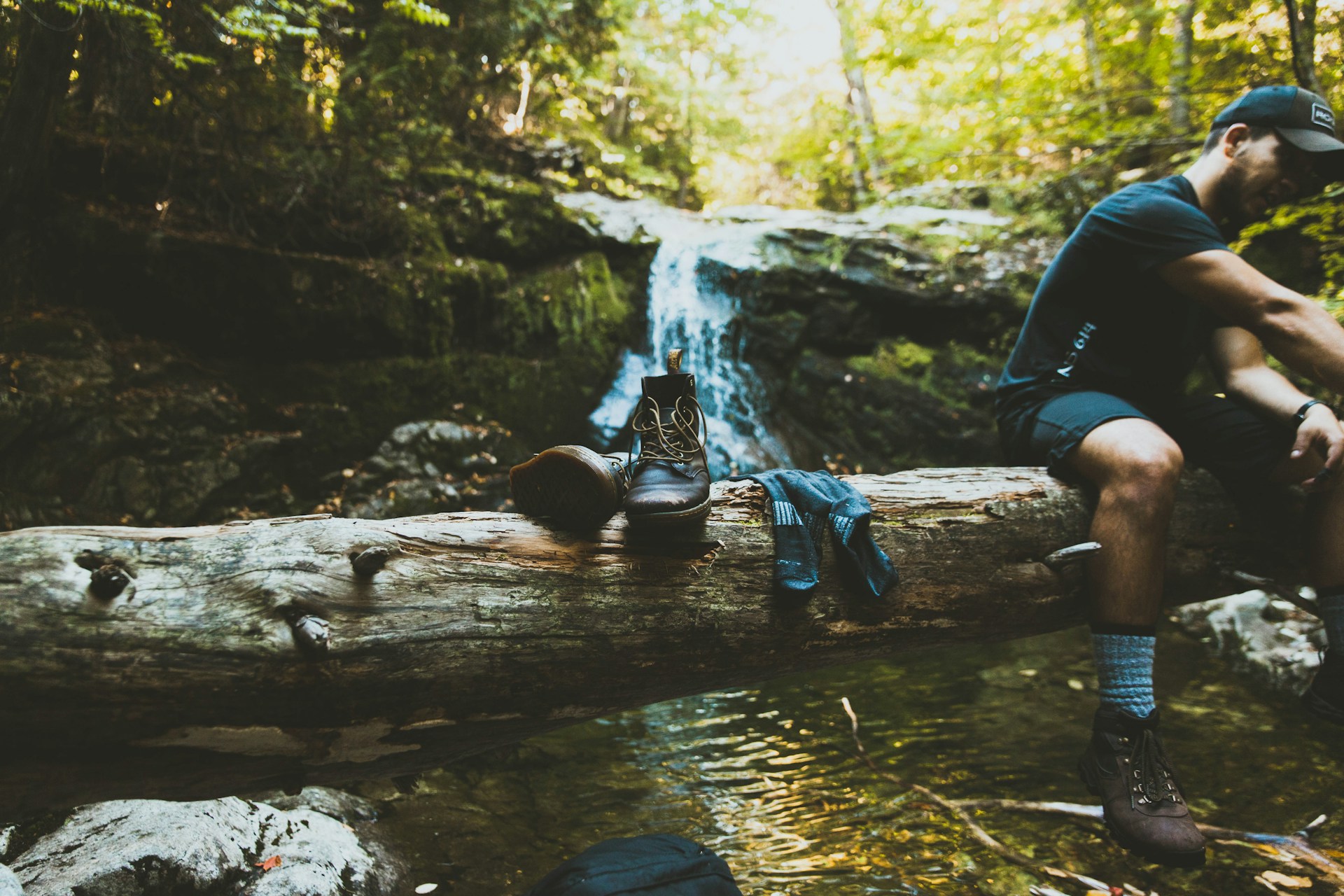Overview of Wool Hiking Socks
Understanding the benefits of wool hiking socks is essential for any outdoor enthusiast. These socks are praised for their ability to provide natural insulation, ensuring feet stay warm during cold hikes while also remaining breathable enough to cool feet in warmer conditions. This balance not only enhances comfort but also helps prevent blisters and other foot injuries by managing moisture effectively.
Popular features of wool hiking socks include their odour-resistant properties, courtesy of the natural lanolin found in wool. This can be particularly advantageous on long hikes where fresh socks aren’t readily available. Additionally, wool’s elasticity ensures a snug fit, reducing the risk of sock slippage and the subsequent development of hot spots commonly experienced during lengthy excursions.
Also read : Shop clear backpacks: stylish, durable, and budget-friendly options
Selecting the right material is crucial. While pure wool socks offer many benefits, combining wool with synthetic fibres can enhance durability and perfect the fit. Users who prioritise sustainability will be pleased to know that wool is a renewable resource. By considering these factors, hikers can optimise their comfort and efficiency on the trail, ensuring their gear supports rather than hinders their adventure.***
Buyer’s Guide to Wool Hiking Socks
Finding the perfect pair of wool hiking socks can be a blend of comfort, durability, and practicality. Understanding key considerations is vital for any hiker.
Topic to read : Top UK Brands Pioneering the Future of Gender-Neutral Fashion
Key Considerations
When selecting wool hiking socks, their thickness directly influences warmth. Opt for thicker socks in cooler climates, while lighter versions serve warm-weather hikes. Another crucial factor is moisture-wicking properties. Socks should efficiently draw perspiration away from the skin, keeping feet dry and reducing the risk of blisters. Also, consider socks with proper cushioning and support for prolonged comfort during lengthy treks.
Fit and Sizing
Achieving the right fit in wool hiking socks is essential to prevent discomfort and proper function. Sizes can vary across brands, so checking availability in different shoe sizes ensures compatibility. It’s also helpful to know how to adjust sock choice for varying shoe sizes to maintain perfect harmony between sock and boot.
Durability and Longevity
Examining material quality indicators such as the blend composition can reveal how hard-wearing a pair is. Regular care practices like gentle washing and air-drying can significantly extend your socks’ lifespan. To identify durable options, seek products with reinforced heel and toe areas, common indicators of a robust design.
Recommended Brands and Products
Choosing the best brands for wool hiking socks can significantly impact your hiking experience. Among the leading names are Smartwool, Darn Tough, and Icebreaker, each offering unique qualities and standardized innovation.
Smartwool is celebrated for its use of Merino wool, ensuring moisture-wicking comfort and temperature regulation. Their flagship socks, the Smartwool Performance Hike series, are praised for durability and fit. Users commend the cushioning and support in varied terrains, reinforcing their popularity.
Darn Tough stands out for its lifetime warranty, asserting confidence in its product’s longevity. The Darn Tough Hiker Boot Sock Cushion is particularly favored for intense durability, designed to withstand the demands of rugged activities. Testimonials highlight their snug fit without feeling overly tight, ideal for preventing blisters during long hikes.
Icebreaker, another reputable brand, prioritizes eco-friendly practices in its sock production. The Icebreaker Hike+ Light Crew socks blend comfort with sustainability. Reviews reflect user appreciation for their soft texture and effectiveness in temperature control, making them a preferred choice for eco-conscious consumers.
These brands cater to diverse preferences, ensuring hikers find socks that align with their needs for performance, comfort, and sustainability.
Specific Use Cases for Wool Hiking Socks
Wool hiking socks are essential for both day hikes and multi-day treks due to their unique properties.
Day Hikes
For short hikes, wool hiking socks should ideally feature lightweight cushioning and medium thickness. This combination ensures sufficient comfort without excessive bulk. Moisture management is crucial; wool’s natural fibres wick away sweat, preventing blisters and keeping your feet dry. Opting for socks that balance warmth and ventilation can significantly enhance your hiking experience.
Multi-Day Treks
Longer excursions demand durability and comfort in wool hiking socks. Look for socks with reinforced heel and toe sections to withstand prolonged wear and reduce friction points. Combining wool socks with a thin liner sock can provide added protection and warmth, creating a strategic layering system for optimal thermal regulation.
Seasonal Considerations
The needs for wool hiking socks differ dramatically between winter and summer. During colder months, opt for socks with a higher wool percentage for increased insulation. Summer hikes benefit from lighter, more breathable options to prevent overheating. Adjusting sock thickness and material according to the climate ensures maximal comfort whatever the season, allowing you to seamlessly adapt to varying weather conditions.
Care Tips for Wool Hiking Socks
Proper caring for wool hiking socks is essential to ensure their longevity and performance. When it comes to washing these socks, choose a gentle cycle with cold water. This helps maintain the fibres’ elasticity and prevents shrinkage. Avoid using bleach or fabric softeners as they can degrade the wool.
Drying is equally important. Air drying is the best option as it preserves the fabric’s integrity. You may want to lay your socks flat on a towel, away from direct sunlight and heated sources. Avoid tumble drying as it can cause the wool to lose its natural softness.
Maintaining the quality of your wool hiking socks also involves addressing unwanted odours and stains. For odours, a simple soak in a vinegar and water solution can be effective. To handle stains, gently blot the area with a mixture of water and mild detergent, avoiding vigorous rubbing which may distort the fabric’s weave.
Incorporating these practices into your routine will help you enjoy the comfort and durability of your wool hiking socks on every adventure. Good maintenance extends their life, ensuring they remain a trusty companion on your hikes.
Product Comparisons
Comparing wool hiking socks can significantly aid in choosing the best options for outdoor ventures. These socks vary widely in terms of features, performance, and price. Understanding these differences allows for a more informed decision.
Budget vs. Premium
Sock prices can range from budget to premium, with key attributes enhancing their cost-effectiveness. Budget-friendly wool hiking socks offer basic warmth and durability. Premium options, however, typically include advanced features such as superior moisture-wicking abilities and additional cushioning. When determining value for money, consider how often and intensely you plan to use them. Regular hikers might find that investing in premium options can enhance comfort and lifespan.
Performance Reviews
Users often report distinct experiences depending on their hiking environment. Durability is critical in rugged terrains, while comfort becomes essential for longer trails. Reviews can reveal how well socks maintain their integrity and warmth over time, providing insights into their longevity. It is typically noted that socks with reinforced heels and toes tend to offer better longevity.
Feature Analysis
In terms of moisture-wicking, some socks excel over others, preventing blisters by keeping feet dry. Cushioning affects overall comfort and protection, particularly on rocky trails. Breathability and style are additional considerations. Some prefer a sleek design, while others prioritize function over aesthetics, with thicker socks providing extra insulation in cold weather.











